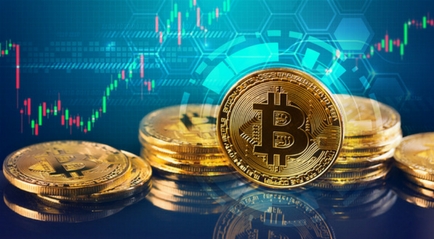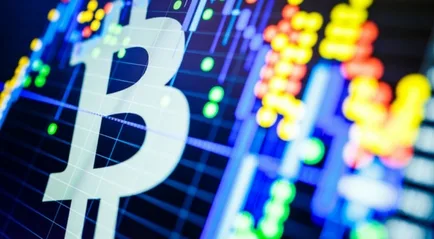Are you worried about having your cryptocurrency stolen from a centralized exchange? You’re not alone.
From Mt. Gox and Bitfinex to Coincheck and Bitgrail, there have been many well-publicized examples of exchanges being hacked and millions of dollars’ worth of crypto being stolen. But now there’s another way to trade digital currency without entrusting your coins or tokens to a third-party exchange: decentralized exchanges.
Offering peer-to-peer trading and allowing users to retain control of their coins, decentralized exchanges offer a key security advantage over conventional platforms. As a result, they’re experiencing rapid growth at the moment, with several platforms already live and many more in development.
Below we explain how they work and what makes them so important. Our goal is to provide you with the information you need so that you can decide if decentralized exchanges offer the experience that’s right for you.
What is a decentralized exchange?
A decentralized exchange is a platform that cuts out the middleman and allows users to trade cryptocurrency directly with one another. This allows traders to retain control of their funds at all times rather than having to entrust them to an exchange provider, with trades executed using smart contracts.
DEXs are hosted on a network of distributed nodes, which not only reduces the risk of hacking but also solves the problem of server downtime that restricts users’ ability to trade. DEXs are designed to offer an open and transparent network that makes crypto trading accessible to everyone.
There are several decentralized exchanges that are already live and offering peer-to-peer trading across a range of cryptos. However, this number is expected to increase dramatically in 2018 with a host of new platforms slated to launch.
How is a DEX different from a centralized exchange?
Centralized exchanges are also online platforms where you can buy or sell digital currency, but unlike DEXs they require the use of a third party to complete transactions. Both buyers and sellers trust this middleman, the centralized exchange, to hold their assets. This requires the buyer and seller to trust the exchange to safely complete their transactions and securely store their funds.
Known for being easy to use, centralized exchanges allow you to purchase digital currency using fiat or cryptocurrencies. They provide a simple and straightforward entry point to the market and currently account for the vast majority of crypto trading around the world.
For a quick rundown of the key differences between centralized and decentralized exchanges, check out the table below.
| Centralized exchange | Decentralized exchange | |
|---|---|---|
Trading | Conducted through the exchange | Conducted peer-to-peer |
Control of funds | Exchange controls your coins and tokens | You control your coins and tokens |
Anonymous trading? |
|
|
Hosting | Centralized servers | Distributed network |
Prone to hacks? |
|
|
Subject to government interference? |
|
|
Account withdrawal limits? |
|
|
Compare some of the most popular centralized exchanges side-by-side in our guide.
What benefits do decentralized exchanges offer?
The key advantage of decentralized exchanges is that they allow for trustless transactions. Rather than surrendering your funds to an exchange and putting your faith in it to complete transactions as promised and responsibly manage your funds, you retain complete control.
On a centralized exchange, even once you’ve purchased crypto coins, you don’t actually own them – the coins are still owned by the exchange until you withdraw them to your personal wallet. On a decentralized exchange, you control your funds at all times and can trade coins and tokens in a peer-to-peer setting.
In fact, it could be argued that centralized exchanges go against one of the core principles of cryptocurrency. One of the key features of blockchain technology is its ability to remove the need for centralized control, while it’s also worth pointing out that most cryptocurrencies are billed as being decentralized. In such an environment, buying and selling digital currency on a centralized exchange seems somewhat counter-intuitive.
There are several other advantages to the DEX approach. The distributed nature of the network substantially reduces the risks of hacking and server downtime, while DEXs also offer minimal fees compared to centralized platforms. Decentralized exchanges also allow users to maintain their privacy and trade without disclosing all their personal details.
Pros and cons of decentralized exchanges
Pros
- You retain control of your funds
- You don’t have to trust a third party to safely manage your coins and tokens
- DEXs provide increased privacy to traders
- No risk of server downtime causing you to miss a trading opportunity
- Lower trading fees than centralized exchanges
- The introduction of atomic swaps will allow DEXs to offer faster and more efficient trading
- Lets you avoid transaction and withdrawal limits typically imposed by centralized exchanges
- Their decentralized nature reduces the risk of government regulation or crackdowns
Cons
- Not always as easy to use as conventional exchanges
- Can be intimidating and confusing for new users
- Many don’t yet provide as many advanced trading tools as centralized exchanges
- Currently don’t offer as much liquidity as centralized exchanges
- Some platforms offer limited customer support
- Lack of regulation may concern some users
What to consider when choosing a decentralized exchange
Decentralized exchanges vary quite a bit in terms of their user-friendliness, fees, customer assistance and even the digital currencies they support. With this in mind, you’ll need to thoroughly compare the features of a range of DEXs before deciding on the right platform for your needs. Factors you should consider include:
- Ease of use. DEXs often have a steep learning curve and can be difficult for newbies to understand. Take a look at each exchange’s trading interface to see how easy it will be to use.
- Security features. Check for any additional security features the platform offers to help protect your funds. For example, some platforms allow you to directly link your hardware wallet to the trading contract.
- Currencies available. Which coins and tokens can you trade on the platform? Are all your desired currencies supported, and how/when are new coins and tokens listed?
- Trading volume. How much trading volume does the platform currently maintain? Is there enough liquidity to support your trading needs?
- Transaction fees. Check the fine print for details of the platform’s trading fees and any other charges that may apply to transactions.
- Signup process. How quick and easy is it to register for an account? What details do you need to provide?
- User reviews. One way to get a better feel for the quality of an exchange is to check out some independent reviews. This will help you find out what sort of experience other users have had on the platform and whether they’ve had any problems or concerns.
By considering these factors and comparing the features of a range of platforms, you should be able to find a decentralized exchange that’s right for your needs. And if you want to buy or sell cryptocurrency without exposing yourself to the security risks associated with a centralized platform, it’s a task well worth doing.
More guides on Finder
-
What is a DAO? Decentralised Autonomous Organisations explained
DAOs are already replacing traditional business models and revolution the world of investing. Find out how they work and how to invest.
-
Lido Staking
Lido’s liquid staking allows investors holding LUNA and less than 32 ETH to reap the rewards of DeFi staking.
-
DeFi and Web3 wallets
Find out how a Web3 wallet can allow you to access the world of DeFi, plus discover which wallets we recommend.
-
DeFi tokens: A simple guide for beginners
DeFi tokens compose a prominent sector in the cryptocurrency markets. Learn the basics of these tokens here.
-
What is impermanent loss?
Impermanent loss can be an unforeseen risk when providing liquidity to DeFi. Here we explain what it is with an easy to follow example, and outline how it can be avoided.
-
What is Compound Finance?
We explore how to use Compound Finance for lending and borrowing.
-
Liquidity Pools: The backbone of DeFi
Find out how to become a liquidity provider and how liquidity provider tokens can be used.
-
What is an automated market maker?
Discover what an automated market maker is in DeFi and what it offers in comparison to the traditional market-making system.
-
How to use Curve Finance for DeFi
Learn how to use Curve.fi for trading, providing liquidity and earning interest with this simple guide.


